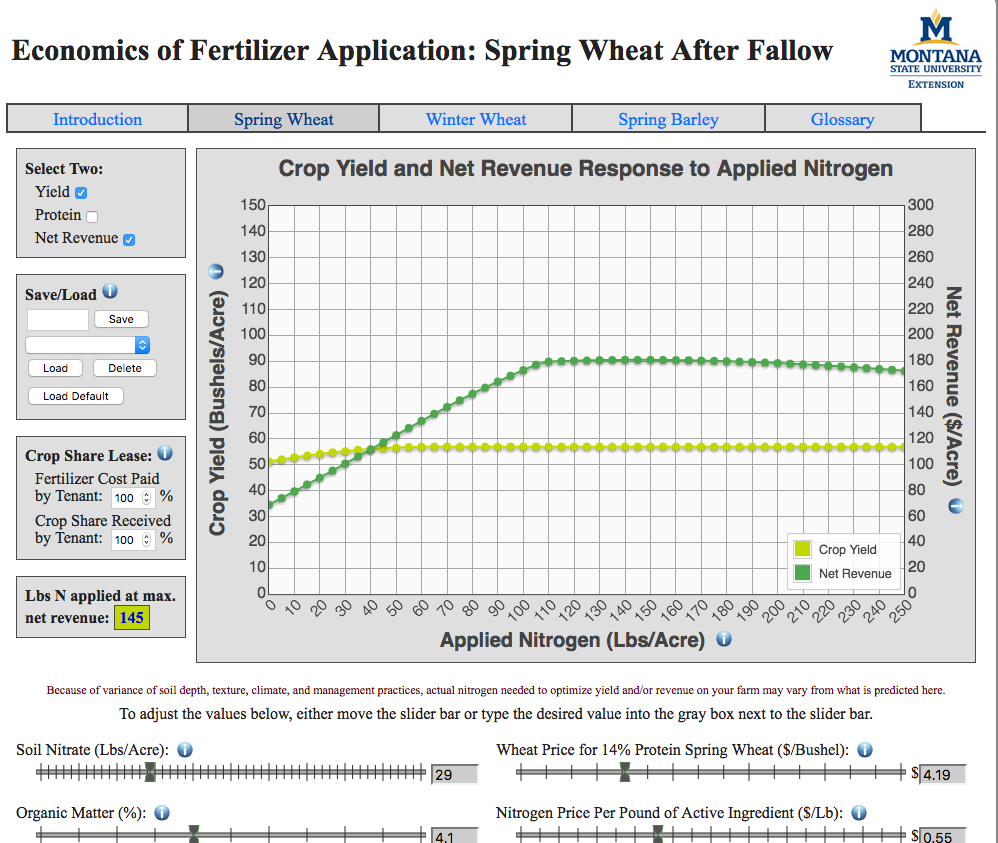Grain prices are…pretty low. One bright spot in the ag markets has been lower fuel and fertilizer prices. Should you take advantage of lower fertilizer prices given that 2017 grain prices aren’t looking at a big comeback yet?
This year in Montana we had some pretty wild weather. Early in the season, bad weather resulted in predictions of big losses in grain crops in some areas. But things sure turned around. We ended up with very high, and in some places, record yields. Given the dismal outlook early in the season, few producers applied fertilizer to meet those yields. As a result, we saw very low protein and high discounting, and low overall prices.
Optimizing fertilizer application to maximize net revenue is more important now than ever. I’ve been working with Clain Jones, MSU Extension Soil Fertility Specialist on a simple, mobile-friendly online tool that helps to make these complicated calculations.
Just enter soil nitrate level, organic matter, yield goal, as well as anticipated wheat price, nitrogen fertilizer price, and protein discount and premium. (Check out wheatbasis.montana.edu for forecasted wheat prices, basis, and protein premium/discount predictions.) With that information, the calculator gives estimates for yield and protein response to applied nitrogen. It also suggests the amount of nitrogen to apply for maximum net revenue, using models that are based on multi-year field trials in numerous locations across Montana.
Currently the model is just for small grains—spring wheat, winter wheat, and spring barley, following fallow. Jones and MSU Sustainable Cropping Systems Professor Perry Miller are currently collecting data to add continuous wheat, pulse-small grain, and legume cover crop-small grain options to the calculator.
Check out the fertilizer rate calculator, along with several other farm management apps, on the MSU Extension EconTools website.

